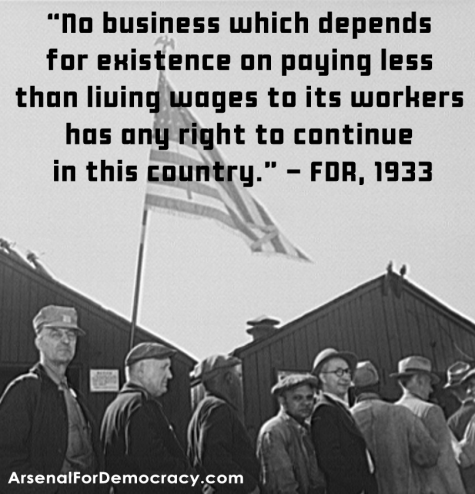This essay was originally published in The Globalist.

What can governments do for incomes in an era of intense global labor competition and automation?
Whose duty is it to ensure a living wage in a global economy where jobs can be moved easily to more “flexible” jurisdictions? And how is that goal of a living wage best achieved, regardless of any moral responsibility?
Increasingly, those questions may have two very different answers, as abstract ideals diverge from realistic solutions in the 21st century.
Aging policies
One common policy solution of the 20th century industrialized world was legal compensation floors, mainly hourly minimum wage laws. Companies were simply compelled to meet their duty to workers.
The first country to authorize a government role in setting minimum wages was New Zealand in 1894. The United States saw its first state minimum authorized in 1912, just over a century ago.
Franklin D. Roosevelt, the U.S.’s 32nd President and the leader of America’s New Deal, in 1933 explained the principle behind such mandates:
It seems to me to be equally plain that no business which depends for existence on paying less than living wages to its workers has any right to continue in this country.
In 1933, that statement was not just a moral argument, but also an enforceable policy position. Today, in many cases, it is not.
No enforceability
Large multinational corporations that operate worldwide have more leverage and flexibility in the global marketplace than any single national government. Their transnational character allows them to avoid national efforts to compel them to do their fair share under a more democratic capitalism.
In many sectors, if a large business has – in the words of Roosevelt – no “right to continue [operating] in this country” due to its preference for paying sub-living wages, it can and will simply go elsewhere.
The century-old mechanism of a legal wage minimum — while still critical — is losing its effectiveness against poverty and labor abuses due to the radical transformation of the global economy. New mechanisms are now urgently required to supplement it.
The underlying goal – the need for a living wage – that once led to the creation of minimum wages have not changed – but the toolbox must expand.
Until lately, the issue has stalled. In most of the industrialized world, strong social safety nets often reduced the perceived need for higher wages. Meanwhile, U.S. activists were tarred as closet socialists seeking the Europeanification of free-market America.
Everywhere, the poor typically lack political leverage. Their demands are frequently written off as ignorant populism detached from economic realities.
Tipping point
But we have reached a tipping point. Even techno-optimists – those who have long boosted the life-easing benefits of the arrival of robots – are now concerned.
They are starting to acknowledge that the pressure on wage levels (and employment levels themselves) will no longer just come from cheap, surplus human labor overseas. It will also come from increased mechanization, automation and robotics.
And this time, the pressure will affect (and is already starting to affect) workers with higher incomes, too. Read more





